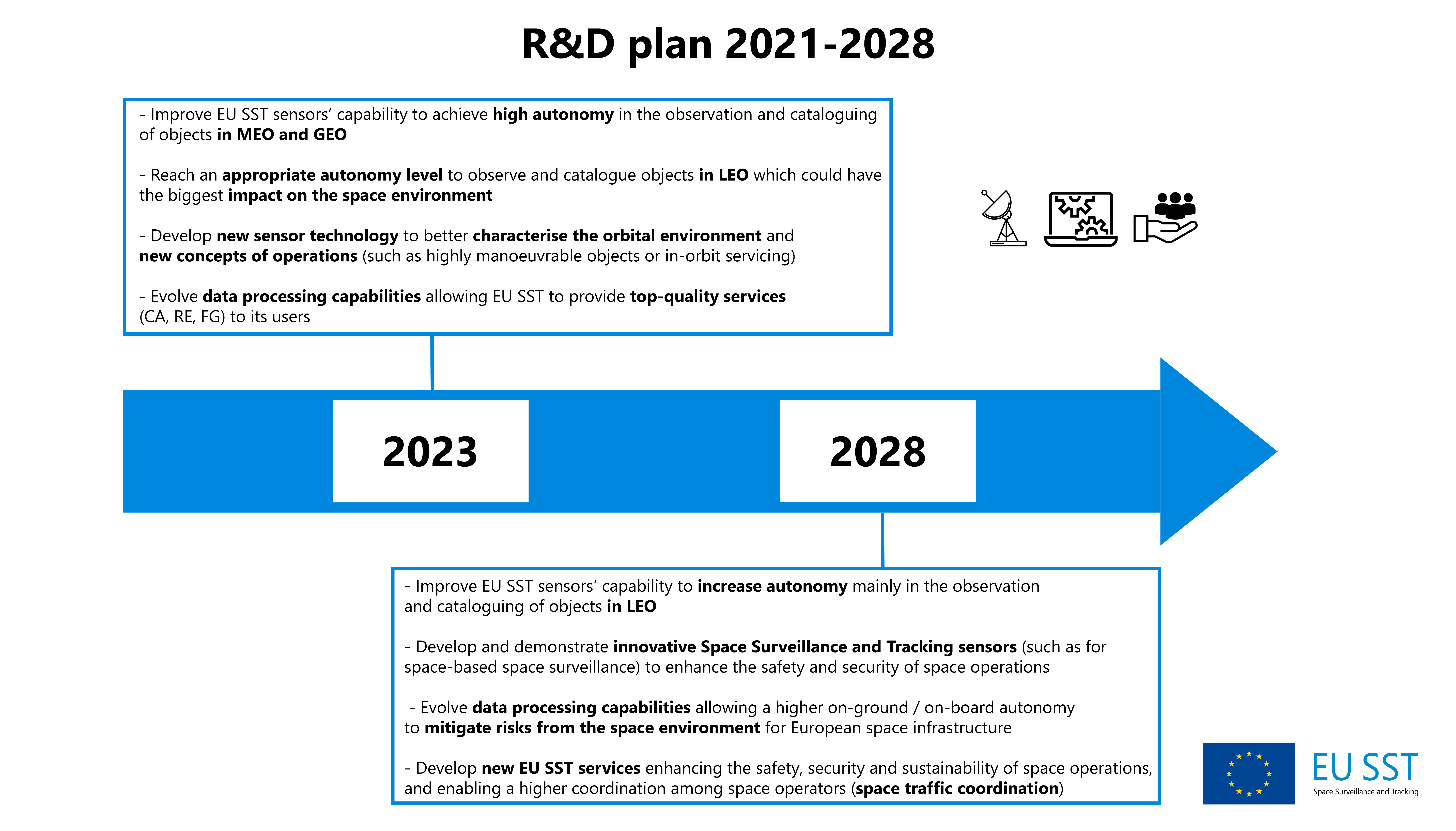Space is a very dynamic environment that is of strategic importance for Europe, as space applications are essential for its economies, societies and citizens. With increasingly congested orbits, new actors, and the emergence of innovative technologies, it is vital for the European Union to enhance its current space surveillance and tracking system to respond to current and future challenges and ensure the safety, security and sustainability of space operations.
To facilitate a sustained long-term evolution and enhancement of EU SST, the SST Cooperation put in place a Research and Development (R&D) plan consisting of a set of hardware and software R&D activities. The selection of the subjects to develop and the outcomes to be taken to a pre-operational stage is done through architecture studies and system design activities. This process allows EU SST to assess and select the activities presenting the highest quality and added value and to offer cost-efficient space surveillance and tracking services, while anticipating needs and preparing for the future.
For the implementation of the EU SST R&D plan, the Partnership members not only coordinate research efforts within the EU SST programme and in coherence with national R&D programmes, but also strongly involve industry, academia and start-ups in the development of research activities, with some 80% of the investments allocated through subcontracts. A non-exhaustive list of these R&D activities follows:
-
Sensor function activities (the use of existing technologies or the development of new ones applicable to sensors):
- the use of telescopes together with radars to catalogue objects in the High LEO orbital regime, and together with lasers to observe objects in all orbits;
- the application of Artificial Intelligence and Deep Learning techniques for an improved detection and characterisation of resident space objects;
- the use of passive radio frequency sensors to improve the knowledge and characterisation of manoeuvring objects in all orbits;
- the operation of space-based surveillance systems to complement those on the ground;
- the creation of an innovative sensor tasker and scheduler for the whole EU SST sensors network.
-
Processing function activities (the development of new approaches on data processing algorithms to improve the cataloguing activity and the SST services):
- the improvement of methods to detect manoeuvres and improve correlation and orbit determination;
- the creation of a common European catalogue of objects’ orbital parameters;
- the development of orbit determination techniques (in particular for initial orbit determination) that allow to fuse radar and optical data measurements;
- the development of algorithms to improve the quantification and propagation of uncertainties for cataloguing and the provision of SST services;
- the development of methods to detect conjunctions and calculate the probability of collision for satellites travelling at low relative velocities (such as constellations).
-
Service function activities (the analysis of potential new SST services to improve and complement the current Service Portfolio):
- increase the autonomy of satellites to anticipate and act against a collision risk;
- new safety of flight services, such as radio frequency interference, support to launch, early orbit phase and end-of-life operations;
- support for in-orbit contingencies and anomalies;
- support for active debris removal and in-orbit proximity operations;
- a communication and coordination platform for space operators.
These activities are defined with a view of achieving an appropriate level of autonomy in space surveillance and tracking and will allow to consolidate EU SST as the European capability for space traffic coordination.
The below graph describes the objectives of the EU SST R&D plan to be achieved in the medium (2021-2023) and long term (2024-2028):
For more details on calls for tender related to the EU SST research and development, please check the Procurement page.

